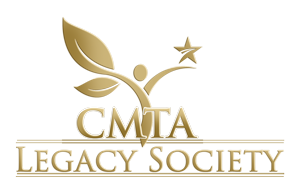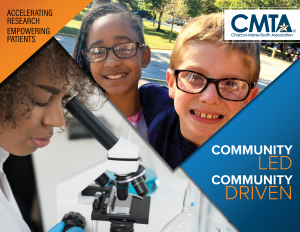Our Mission and History
Our mission … to support the development of new treatments for CMT, to improve the quality of life for people with CMT, and, ultimately, to find a cure.
Our vision … a world without CMT.
CMTA was started by patients, and to this day is powered by a community of patients who are engaged in helping carry out and support our mission. We have a rich history, which you can learn about by reading below.
About the Charcot-Marie-Tooth Association (CMTA)
In 1983, a small but determined group of patients, their families, clinicians, and researchers united with one mission: to eliminate Charcot-Marie-Tooth disease (CMT). This group would launch what is now the Charcot-Marie-Tooth Association.
Who We Are
Introducing “Who We Are” – your comprehensive guide to the Charcot-Marie-Tooth Association (CMTA), serving as a beacon of hope and support for those affected by CMT. Discover how the CMTA is driving progress in research, investing millions to accelerate breakthroughs that will bring treatments and ultimately a cure to CMT. With a commitment to improving quality of life, CMTA offers a wealth of resources, from support groups to educational materials, to our ever-growing Centers of Excellence CMT clinic network, and so much more, each are tailored to meet the needs of patients and families. Download now and join us in the journey towards empowerment, community, and a world without CMT.
-
Breakthrough Research in Type 1 CMT
Only four years after founding the NFPMA, Dr. Shapiro raised the funds and organized the groundbreaking Second International Research Conference at Arden House, the Conference Center of Columbia University. When the conference convened, it was known that there were several types and subtypes of CMT, but not all had been identified. In 1987, although gene mapping was in its infancy, genetic research was taking place in two types of CMT, and it was believed that a genetic defect on chromosome 1 was responsible in the majority of CMT families. However the specific genes had not been identified. At the same time, researchers were working hard to map the location of the gene in x-linked CMT. Following this significant conference, research and journal articles on the disease increased dramatically. A number of significant breakthroughs occurred, the majority of them in type 1 CMT.
Over the next nine years:
- CMT1A was mapped to Chromosome 17.
- The PMP22 (Peripheral Myelin Protein) gene was identified.
- It was found that CMT1A was caused by a duplication of PMP22.
- The cause for HNPP, or Hereditary Neuropathy with Liability to Pressure Palsies, was discovered and shown to be a deletion of the same region on Chromosome 17 as in Type1A.
- It was found that point mutations in the Krox 20 or EGR-2 gene, a transcription factor which can turn genes on and off, leads to a previously unknown, and less common, form of CMT, CMT1D.
- Transcription factors may be extremely important, not only in the future of genetic research, but also in research strategies in affected patients.
- CMT researchers found that a mutation in MPZ gene is responsible for CMT1B.
- CMT1X, a dominant disorder, was found to be caused by point mutations in the Connexin 32 gene.
-
New Research in the Degeneration Taking Place in CMT1
Another important breakthrough during this time was the discovery that the degeneration that takes place in CMT1 is due, not to demyelination, as was previously believed, but to secondary axonal involvement. This is what gives rise to the disabling atrophy and muscle weakness occurring progressively as affected patients age.
The above insights paved the way for the development of diagnostic blood tests for several types of CMT1A, HNPP and CMTX, thus providing the definitive answer for many on what type of CMT they have, and also providing their families with knowledge of the pattern of inheritance. Thanks to the generosity of a number of donors, in the summer of 1995, the CMTA began awarding research grants and issued its first full year grant of $35,000 in 1996. Since then, the Association has awarded 36 grants and fellowships and continued to encourage researchers to investigate topics specific to the unique problems associated with CMT.
Like its predecessor, the Third International Conference on CMT Disorders was a defining moment in the history of CMT research. The conference focused on the latest developments in research and clinical aspects of CMT. There was a special emphasis on the cross-fertilization of ideas and perspectives between clinicians, geneticists, molecular biologists, morphologists and physiologists. A strong effort was made to integrate basic and clinical research and to highlight important areas for future research and collaboration. It put CMT on the international research map as a disease worthy of research interest.
Since the Third International Conference, many new CMT genes have been identified, and there are now diagnostic tests for types 1A, 1B, 1C, 1D, 1X, HNPP, 2A, 2E, 4E and 4F.
-
North American CMT Database is Established
To help speed up the pace of CMT research, a North American CMT Database was established in conjunction with Wayne State University in 2001. Housed at Indiana University School of Medicine, the database provides researchers with ready access to families categorized by their various types and subtypes of CMT.
This database is an exciting accomplishment which will provide physicians and researchers with a more thorough understanding of all the clinical symptoms that accompany the various types and subtypes of CMT, thus allowing them to say with certainty, THIS IS CMT! The database will also provide clinicians and researchers with a better picture of the severity and progression of the disease. Additionally, this knowledge will make it easier to diagnose patients, providing a blessing for those who have lived, sometimes for years, with the uncertainty of whether or not they have CMT. The prevalence of CMT will be more easily measured and the direction of CMT research may change as a result of the information provided on the surveys. Certainly, the pace of CMT research will increase by making the information available to qualified researchers. The ease of accessing information may actually stimulate research interest and attract more research funds.
-
North American CMT Consortium is Established
Throughout the years, a major strength of the CMTA has been arranging conferences and bringing researchers together, so following the Third International Conference on CMT Disorders, a decision was made to establish a North American CMT Consortium of clinicians and researchers, similar to the very successful European Consortium. The purpose of the symposium is to expand knowledge of CMT by fostering communication and collaboration among researchers. North American CMT investigators with expertise in molecular biology, genetics, neurophysiology and clinical medicine will be participating. Practical presentations on pain in HMSN1, gait laboratory findings and urological dysfunction in patients with CMT will address some of the issues patients ask about each day.
-
CMTA Publishes First Newsletter
To provide patient education and support, the CMTA began publishing a newsletter in 1987. The goal then, as it is now, was to provide research information to its readers and to provide patients with the knowledge and understanding to deal effectively with the disease. The CMTA Report magazine is now published quarterly.
In 1995, the CMTA published the first text specifically dedicated to Charcot-Marie-Tooth disorders intended to help physicians understand and recognize the disorder. The text was written by members of the CMTA’s Medical Advisory Board and edited by Dr. Gareth Parry. The text is currently being rewritten to include new information and updated chapters.
-
CMTA Branches
Providing CMT branches is another important way in which the association serves its members. Branches are run by caring individuals who provide other CMT patients in their general area a means by which they can interact with others dealing with the same problems and listen to specialists who discuss topics such as surgeries, physical therapy, shoe fitting and bracing. Branches are currently located in approximately 15 different areas of the country.
-
CMTA Patient Family Conferences
Over the years, patient family conferences have been a useful means of introducing patients to medical specialists in their area who treat CMT and are familiar with the disorder. Conferences have been held in Philadelphia, PA, Wilmington, DE, Detroit, MI, New Orleans, LA, Miami, FL, Dallas, TX, Akron, OH, and San Francisco and Los Angeles, CA. These conferences are typically attended by 75-150 patients and family members.
-
CMTA Volunteers
The CMTA is run by a Board of volunteers who establish policy and procedures and who are hands-on in spearheading fundraising activities such as golf tournaments and “swims for the cure.” They generate hundreds of thousands of dollars for the CMTA each year.
The CMTA’s greatest successes have been in accomplishing its twofold goals of supporting, encouraging and funding CMT research and providing information and education to its members through conferences, newsletters, publications and branches. From an organization of only a few hundred persons, the association has grown to be known throughout the medical world and to serve people worldwide who make inquiries through the Internet, by phone calls and with letters asking for our information and publications. Since its founding, the CMTA has made incredible advances in CMT research and knowledge.






